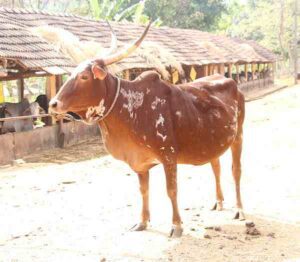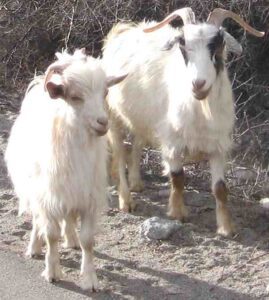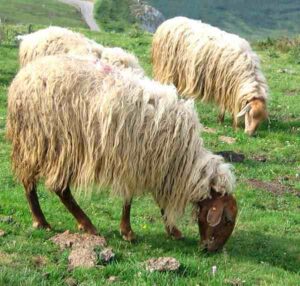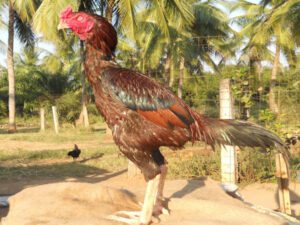The Zalawadi goat is a multi-purpose breed of domestic goat. It is used for milk, meat and fiber production. Actually, the breed is from the Surendranagar, Rajkot regions of Gujarat state in India.
The Zalawadi goat is one of the major goat breed in Gujarat, and it is also known by it’s local name Tara Bakari. They are usually reared by traditional shepherd community known as Rabaris and Bharwads locally, in the semi-arid area of Sourashtra region. Rainfall is erratic and low in this area.
It is believed that the Zalawadi goat breed originated in the former ‘Zalawad‘ region, which is now known as Surendranagar district and part of Zalawad falling in Rajkot districts.
The breed probably got it’s name from the previous Zalawad province of Kathiawad. Now that area is known as Surendranagar district of Saurashtra in Gujarat state. The Zalawadi goat was also available in the adjoining area of Jamnagar and Ahmadabad district, but less in number.
The breed compromises 27.8 percent of the total goat population in Surendranagar. The goats are usually raised in small flock, and the flock size ranges from 15 to 200 goats. And the flocks are usually maintained under extensive grazing management.
Today the Zalawadi goat is mainly kept for their meat, milk and also for fiber production. Read more information about this Indian goat breed below.
Zalawadi Goat Characteristics
The Zalawadi goat is a medium to large sized animal. They have long legs and erect corkscrew shaped horns. Actually, both bucks and does have twisted corkscrew shaped horns directed upward and backward with pointed tips.
The coat of the Zalawadi goat is predominantly black with lustrous, long shining hairs. Some goats also have black and white mixed coat. Their face is slightly raised, ears are long, leafy and drooping and are invariably white speckled.

The ears of the Zalawadi goat are so wide loose and leafy that the shepherds traditionally trim the ears and sometimes split the ears to avoid injuries from thorny bushes while browsing.
The Zalawadi does have large udder and well developed with long conical teats. Average body weight of the adult Zalawadi bucks is about 39 kg, and the does on average weight about 33 kg
Uses
Zalawadi goat is a multi-purpose breed. It is suitable for meat and milk production. And also good for fiber production.
Special Considerations
The Zalawadi goats are very beautiful animal and usually are of good behavior. The does are good milk producers. On average, a doe produces about 1.5 to 2 kg of milk daily. Depending on their rearing conditions, milk production can vary.
Some goats produce about 154 kg of milk in a lactation period of 5 months or 150 days under usual village conditions. The birth rate is 55% twins and 2% triplets. However, review full breed profile of the Zalawadi goat in the following table.
| Breed Name | Zalawadi |
| Other Name | Also known as Tara Bakari |
| Breed Purpose | Meat, Milk, Fiber |
| Breed Size | Small to Medium |
| Buck | About 39 kg |
| Doe | About 33 kg |
| Horns | Yes |
| Climate Tolerance | All Climates |
| Coat Color | Mainly black, also found in black and white mix coat. |
| Good for Stall Fed | Yes |
| Rarity | Common |
| Country/Place of Origin | India |






